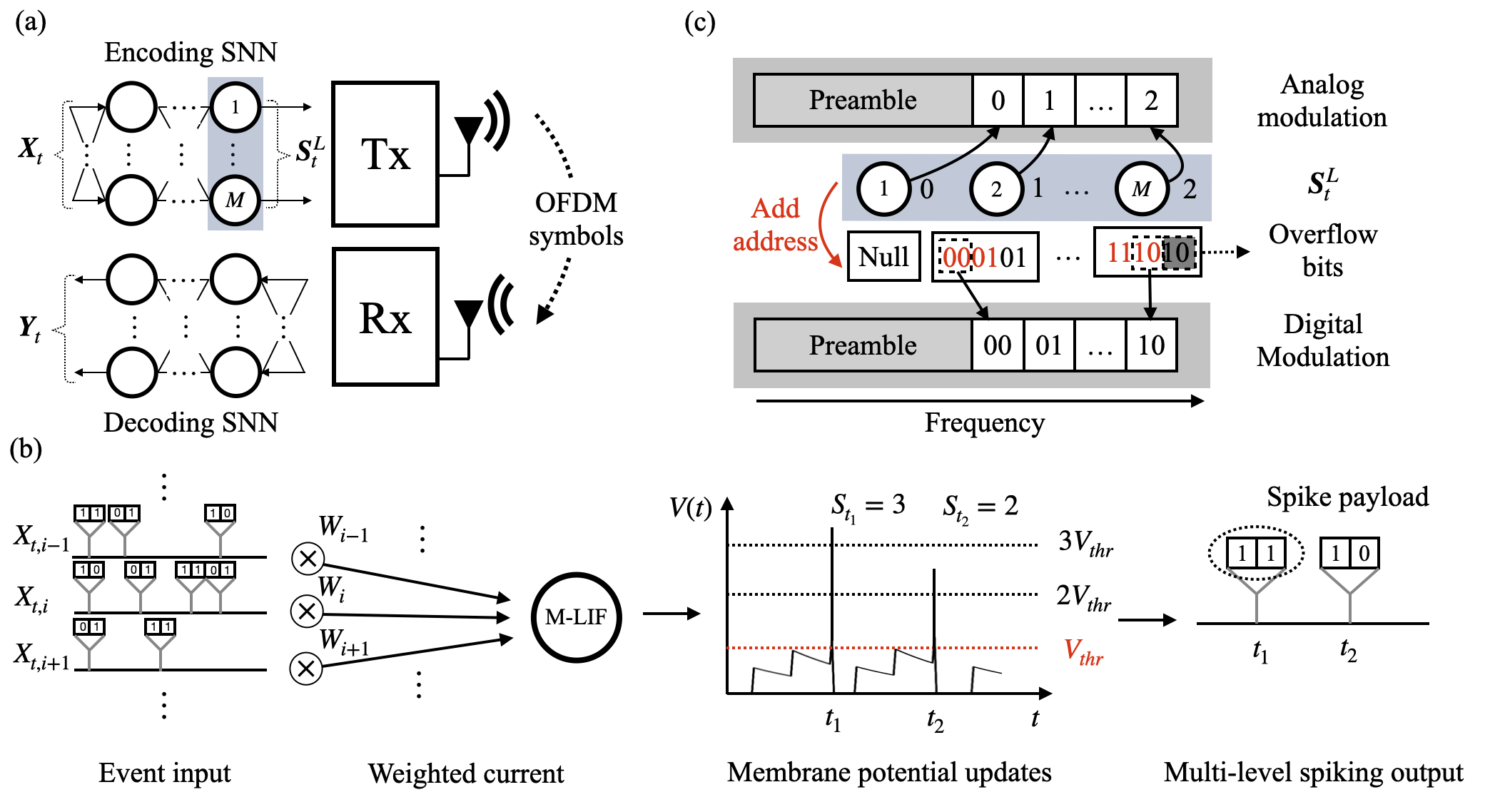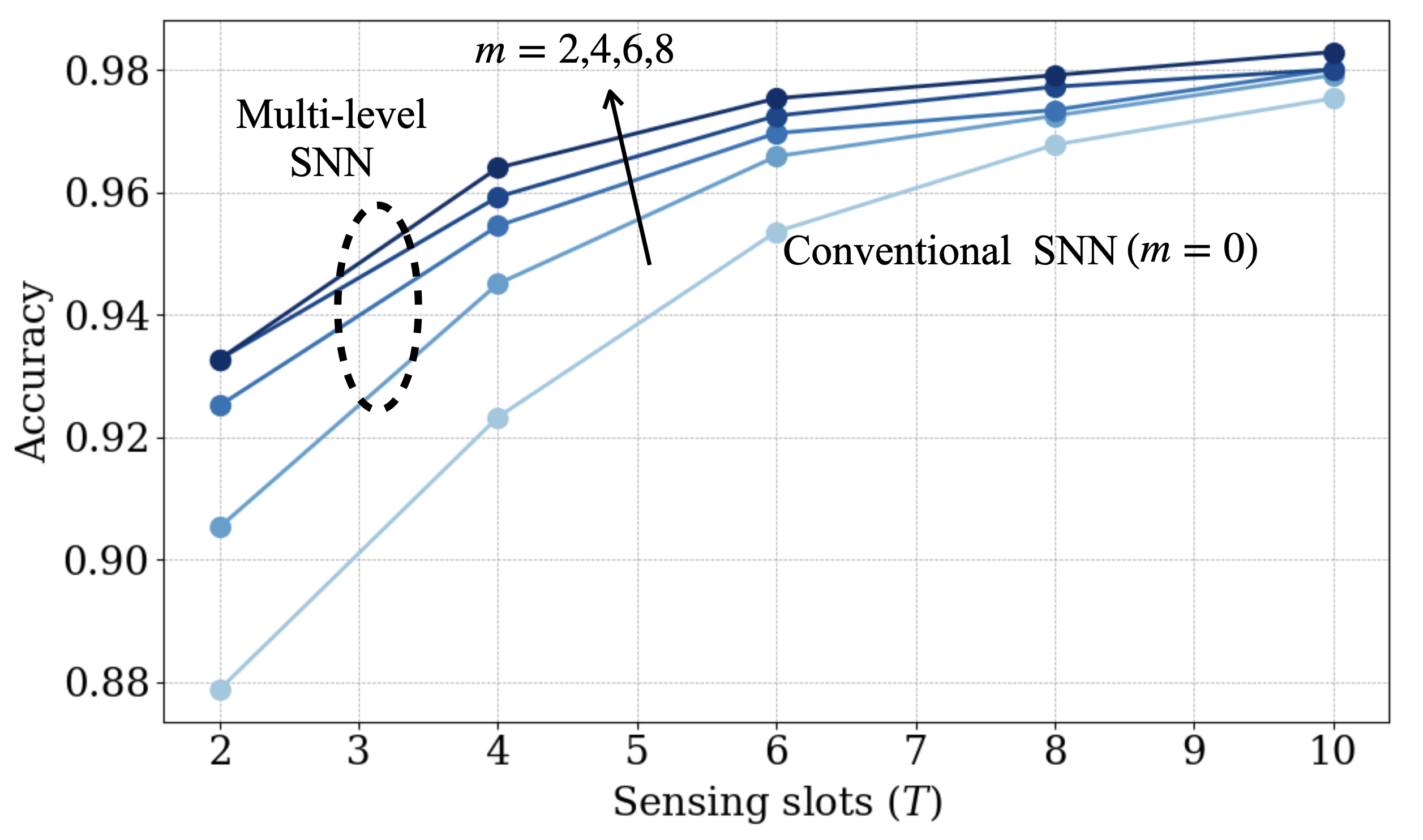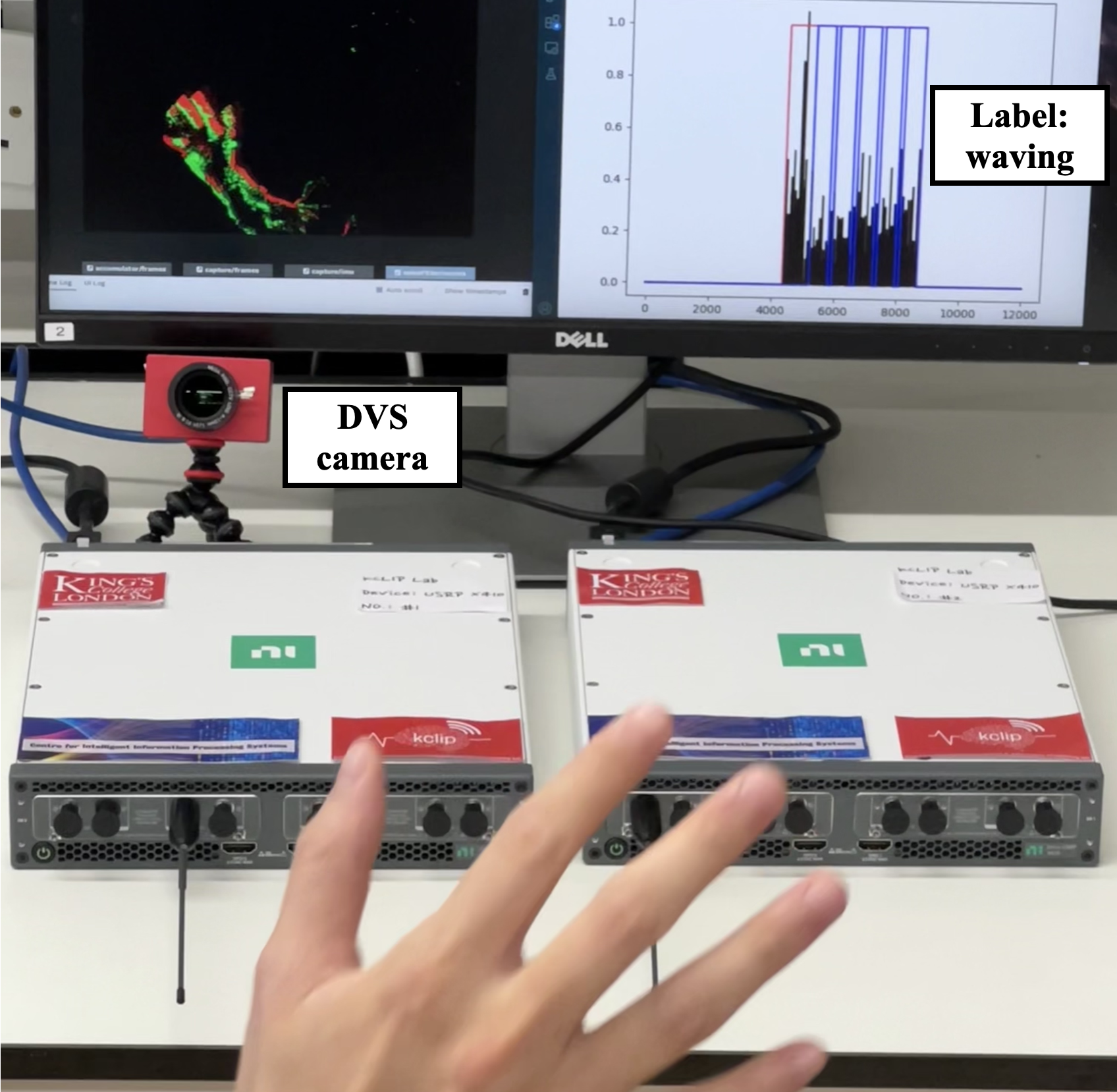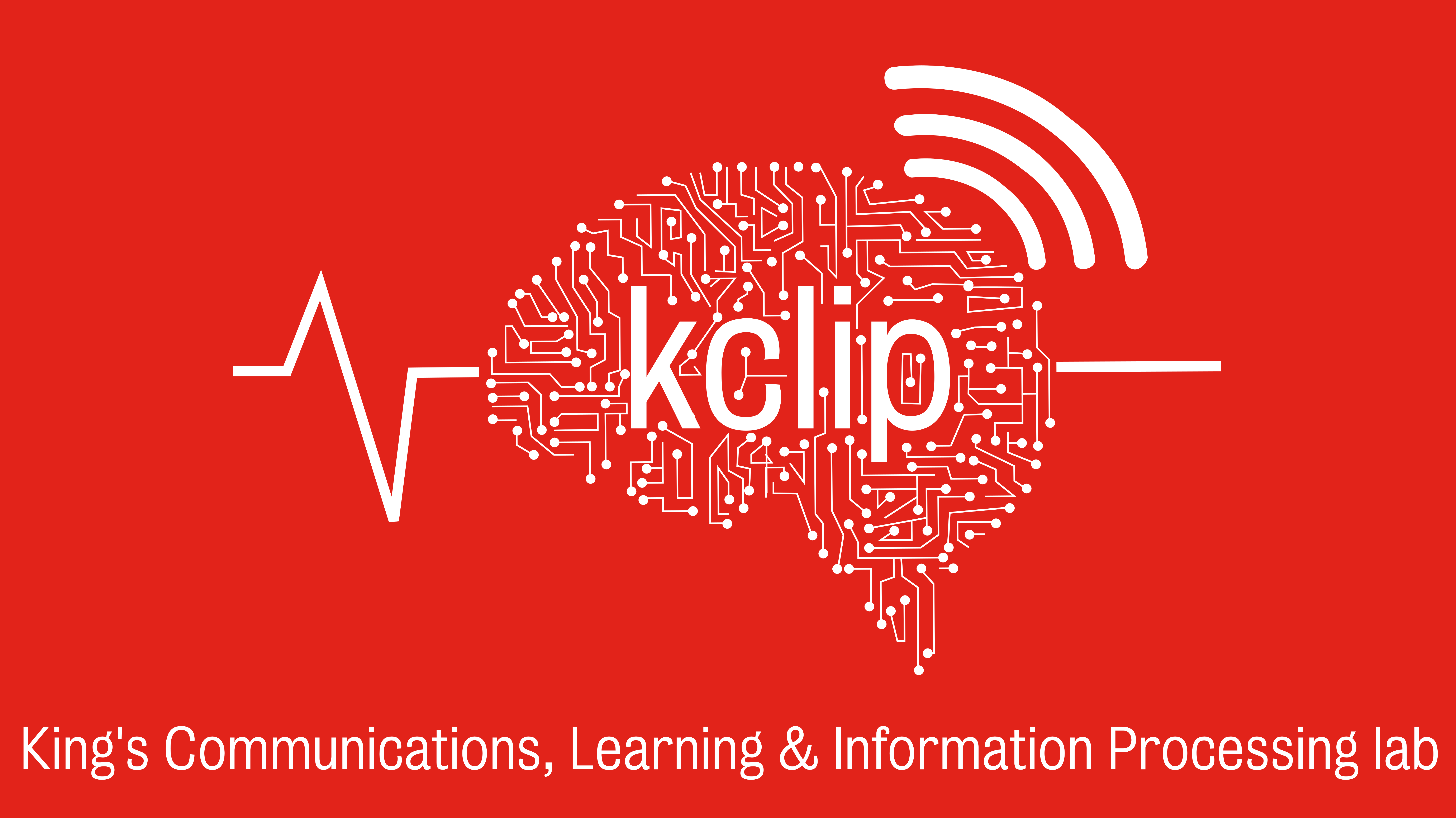Motivation
Current AI hardware platforms, such as GPUs, face significant limitations in scalability and energy efficiency, especially for edge deployments. This challenge motivates the exploration of alternative computing paradigms, among which neuromorphic computing has emerged as a promising candidate. Neuromorphic computing, leveraging spiking neural networks (SNNs), mimics biological neural systems by encoding and transmitting information through spikes, thus offering substantial efficiency gains for sequential and event-driven data processing. However, the increasing complexity and depth of SNNs required for large-scale tasks pose significant energy and memory demands for mobile and edge devices.
Split computing, where the computational workload is distributed across multiple devices, offers a promising solution to mitigate these demands. Recent advances indicate that embedding multi-level, or graded, spikes, can significantly enhance the inference accuracy of SNNs without substantially increasing energy consumption [1-2]. However, this introduces a trade-off between the benefits provided by enriched spike information and the limited communication resources required for transmitting extra bits between devices.
This work
As shown in the figure below, we consider a neuromorphic wireless split computing architecture in which an SNN, using multi-level leaky integrate-and-fire (M-LIF) neurons, is partitioned into encoding and decoding layers across two separate devices connected via a wireless channel. Specifically, the initial part of the SNN, deployed at the transmitter side, processes sequential data from neuromorphic sensors (such as dynamic vision sensors) and transmits the resulting multi-level spike outputs over the air to the second part deployed at the receiver side for inference.

Our approach encodes event-driven spiking signals, which are inherently sparse and irregular. The OFDM transmission scheme leverages this sparsity differently in analog and digital modulation methods. For analog transmission, each data subcarrier within the OFDM system is dedicated to a specific output neuron, directly modulating the neuron’s multi-level spikes. Subcarriers remain idle whenever their assigned neurons do not emit spikes, effectively harnessing the signal sparsity. In digital modulation, sparsity is utilized by encoding all generated spikes when sufficient bandwidth is available. However, if spike density increases beyond the bandwidth constraints, some spikes must be dropped to ensure that transmission remains within the available OFDM symbols.
Experiments
Our experiments evaluate the benefits of using multi-level spikes over conventional binary spikes and showcase the practical viability of our proposed architecture. The first figure below illustrates the accuracy improvements achieved by employing multi-level spikes compared to conventional SNNs, particularly within limited sensing periods. Additionally, as shown in the second figure below, we provide details of our experimental setup using software-defined radios (SDRs), demonstrating the real-world applicability of our methods. Further results, including detailed energy consumption analysis and additional simulations, are available in the full paper [3].


References
[1] S. B. Shrestha, J. Timcheck, P. Frady, L. Campos-Macias, and M. Davies, “Efficient video and audio processing with Loihi 2,” in Proceedings of the IEEE International Conference on Acoustics, Speech and Signal Processing (ICASSP), pp. 13 481–13 485, 2024.
[2] B. H. Theilman, Q. Zhang, A. Kahana, E. C. Cyr, N. Trask, J. B. Aimone, and G. E. Karniadakis, “Spiking physics-informed neural networks on Loihi 2,” in Proc. IEEE Neuro Inspired Computational Elements Conference (NICE), pp. 1–6, 2024.
[3] D. Wu, J. Chen, B. Rajendran, H. V. Poor, and O. Simeone, “Neuromorphic wireless split computing with multi-level spikes,” IEEE Transactions on Machine Learning in Communications and Networking, 2025.

Leave a Reply